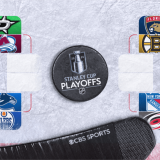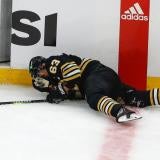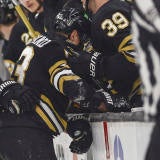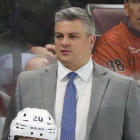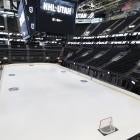 |
| Want to take advantage of a team? Put your best players on the ice after your opponent is whistled for icing. (U.S. Presswire) |
More NHL: Scores | Standings | Power Rankings | Odds | Fights | Stats | Rumors
It's always interesting to see how coaches deploy their players depending on the situation and opponent.
Some teams are fanatical about where and how they use certain players.
The Vancouver Canucks, for example, are well known to almost never send Henrik and Daniel Sedin out onto the ice for a defensive-zone faceoff (as a result, no players take more offensive zone draws than the twins). Instead, coach Alain Vigneault in recent years would give that type of assignment to a player like Manny Malhotra. His sole purpose was to win the faceoff and then leave the ice for a better player as soon as the puck exited the defensive zone.
Part of the reason the Nashville Predators gave Paul Gaustad the contract that they did over the summer (and shockingly gave up a first-round draft pick to acquire him at last year's trade deadline) was due to the number of defensive-zone draws that they have to take as a team. One reason for that is the amount of time that they spend in their own end and also because goaltender Pekka Rinne, for all of the things that he does well, covers the puck and freezes it more than any other goaltender in the league. That, of course, results in even more defensive-zone faceoffs.
(In his one game this season, Gaustad took 11 defensive-zone faceoffs and zero in the offensive zone.)
One reason for all of this is how dangerous defensive-zone faceoffs are for a team and how much of an advantage it can be in the initial seconds after the puck is dropped for the attacking team.
Consider this from a 2009 article at Puck Prospectus on the dangers of defensive-zone faceoffs.
After you lose a faceoff in the neutral zone, you have time to set up defensively and you don't give up a particularly large number of good scoring opportunities. However, when you lose a faceoff in your own end, opponent shots on goal go up so quickly that it's as though you gave the other team a 10-15 second power-play. For several seconds, the rate of shots allowed is as high as it is on a 5-on-3. The prospect of this level of defensive disadvantage, particularly late in a one-goal game, must give coaches nightmares.
That is stunning.
One situation in which a good coach can particularly take advantage of this is after their opponent is whistled for icing.
As you might (perhaps should?) already know, when a team is guilty of icing the puck, they must keep the same players on the ice for the ensuing faceoff. This can result in some tired bodies, which only adds to the problem of having the play begin directly in front of your goalie.
Especially when the players on the ice aren't strong or talented NHL players.
This brings us to Wednesday's Penguins-Maple Leafs game, in which Pittsburgh's Dan Bylsma went all in against Toronto and loaded up with his biggest guns.
On two occassions, the Maple Leafs were guilty of icing the puck with a forward line of Jay McClement, Mike Brown and Colton Orr on the ice. This is not what you would call a particularly skilled line. This would be a nightmare situation for any coach.
Both times, Bylsma countered by teaming up his two best players, Sidney Crosby and Evgeni Malkin, for the ensuing offensive-zone draw (He also did this on Sunday night in New York against the Rangers when the Penguins were short-handed). During the first situation, which took place just two minutes into the game, Bylsma sent Chris Kunitz out as the third forward. After winning the draw, the Penguins recorded a shot on goal just 12 seconds later (a backhander off the stick of Crosby, just seven feet from the net). It was a quality chance, but nothing compared to what happened early in the second period when the same Toronto line iced the puck.
Instead of sending out Kunitz with Crosby and Malkin, Bylsma added 40-goal scorer James Neal to the line for a mismatch that was so laughably absurd that it was almost unfair. That's the best player in hockey (Crosby) and two of the top-four goal-scorers in the league from last season (Malkin and Neal) against McClement, Orr and Brown.
The ensuing 25 seconds was complete mayhem in the Toronto zone. The Penguins fired four shots at goalie James Reimer (three of them on net, every one of them a quality scoring chance) as the Leafs frantically chased them around. Again, that all took place in a span of just 25 seconds.
Four of the Penguins' 21 even-strength shots on Wednesday night came in the initial seconds after those two faceoffs.
Here is part of it motion.
I'm not sure how many times we'll say it this season, but thank goodness for James Reimer if you're a Leafs fan.
It didn't result in a goal for Pittsburgh, mostly because Reimer stood tall and was able to withstand the relentless attack. But it was a great example as to how a coach can take advantage of the situation and mix and match his lines to allow his best players to potentially feast on favorable matchup.
For more hockey news, rumors and analysis, follow @EyeOnHockey and @Agretz on Twitter and like us on Facebook. Also, subscribe to our YouTube Channel.








